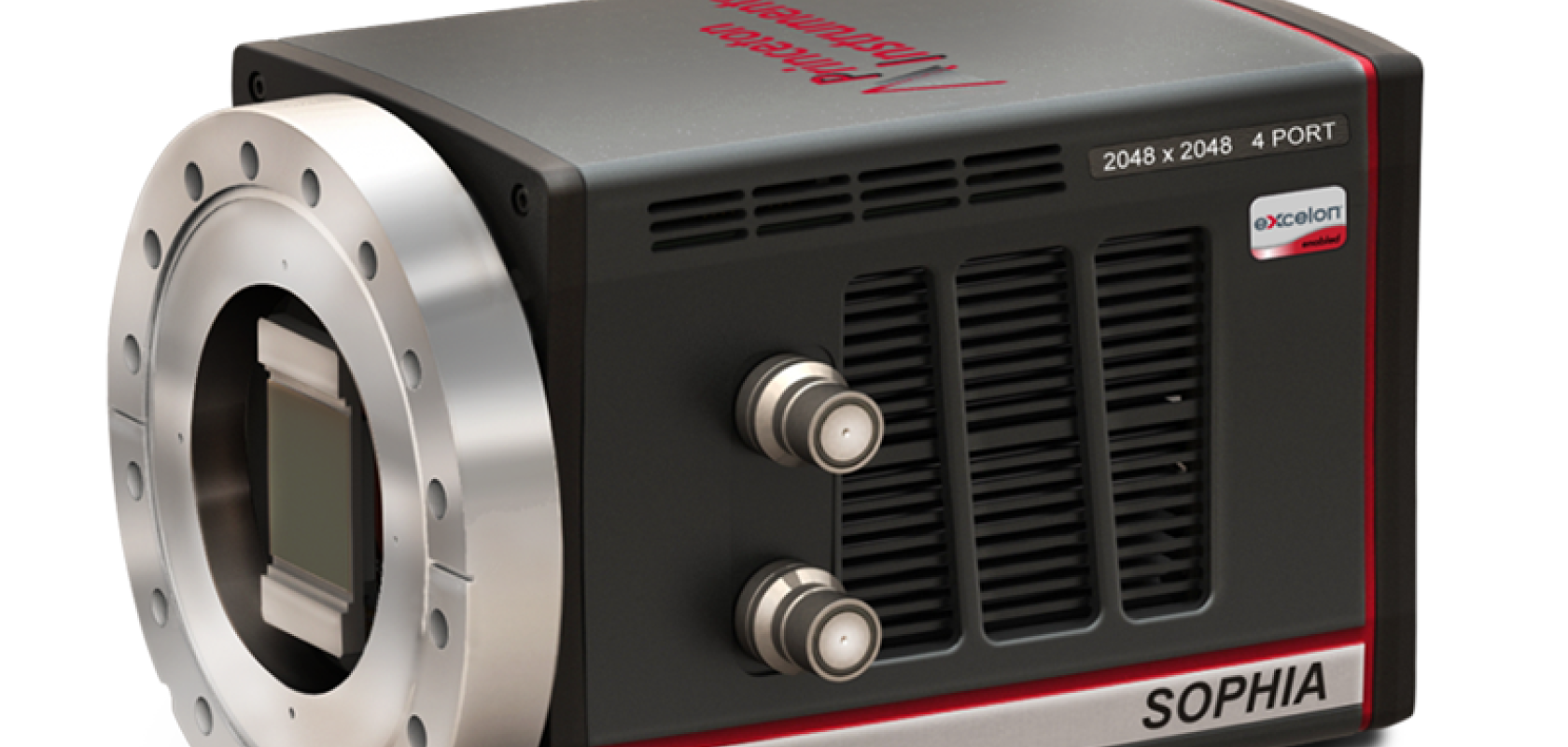Princeton Instruments is pleased to introduce its SOPHIA-XO:2048 high-speed, ultra-low-noise camera, which is engineered to address even the most demanding very low flux scientific applications. The camera features a 2048 x 2048, 15 μm2 pixel CCD and provides >3 fps with 16 MHz readout speed at full resolution. Proprietary new ArcTecTM ultra- deep-cooling technology minimizes dark noise by thermoelectrically cooling the CCD to less than -90°C using only air assist. High frame rates and outstanding sensitivity make the SOPHIA-XO ideal for a diverse range of x-ray applications.
As the newest addition to the currently available Princeton Instruments SOPHIATM UV-NIR line of cameras, the SOPHIA-XO system is engineered to deliver direct-detection performance for applications such as x-ray spectroscopy, microscopy, plasma diagnostics, and EUV lithography. The high-sensitivity, high-speed, thermoelectrically cooled SOPHIA-XO utilizes a back-illuminated CCD without antireflective coating in order to allow direct detection of the widest range of x-rays (~10 eV to 30 keV). A 6” rotatable ConFlat flange with a high-vacuum seal design makes it convenient to interface with UHV instrumentation. With 100% fill factor, a 16- bit digitization rate, and -90°C thermoelectric cooling, the SOPHIA-XO camera is perfect for research and OEM environments.
“SOPHIA’s multiple-port, back-illuminated, 4 megapixel CCD [15 μm square pixels and 30.7 mm x 30.7 mm imaging area] detects 23% more photons per pixel than typical 13 μm pixel sensors,” comments Ravi Guntupalli, Princeton Instruments’ vice president of marketing. “Our engineers have meticulously designed every aspect of the XO to create a no-compromise camera that delivers truly unmatched low-noise sensitivity.”
The new SOPHIA-XO camera is supported by Princeton Instruments’ renowned 64-bit LightField imaging and spectroscopy software, which provides hundreds of user enhancements, such as a powerful built-in math engine to perform live data analysis. LightField also permits direct control from third-party packages such as National Instruments’ LabVIEW, MathWorks’ MATLAB, and EPICS synchrotron software.


